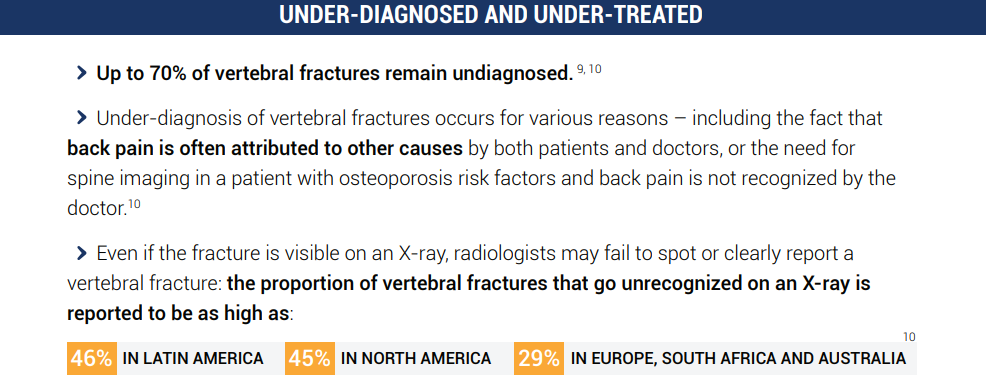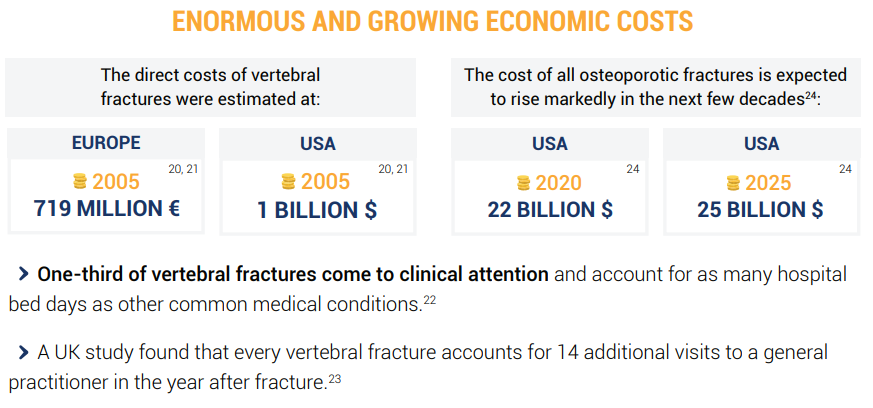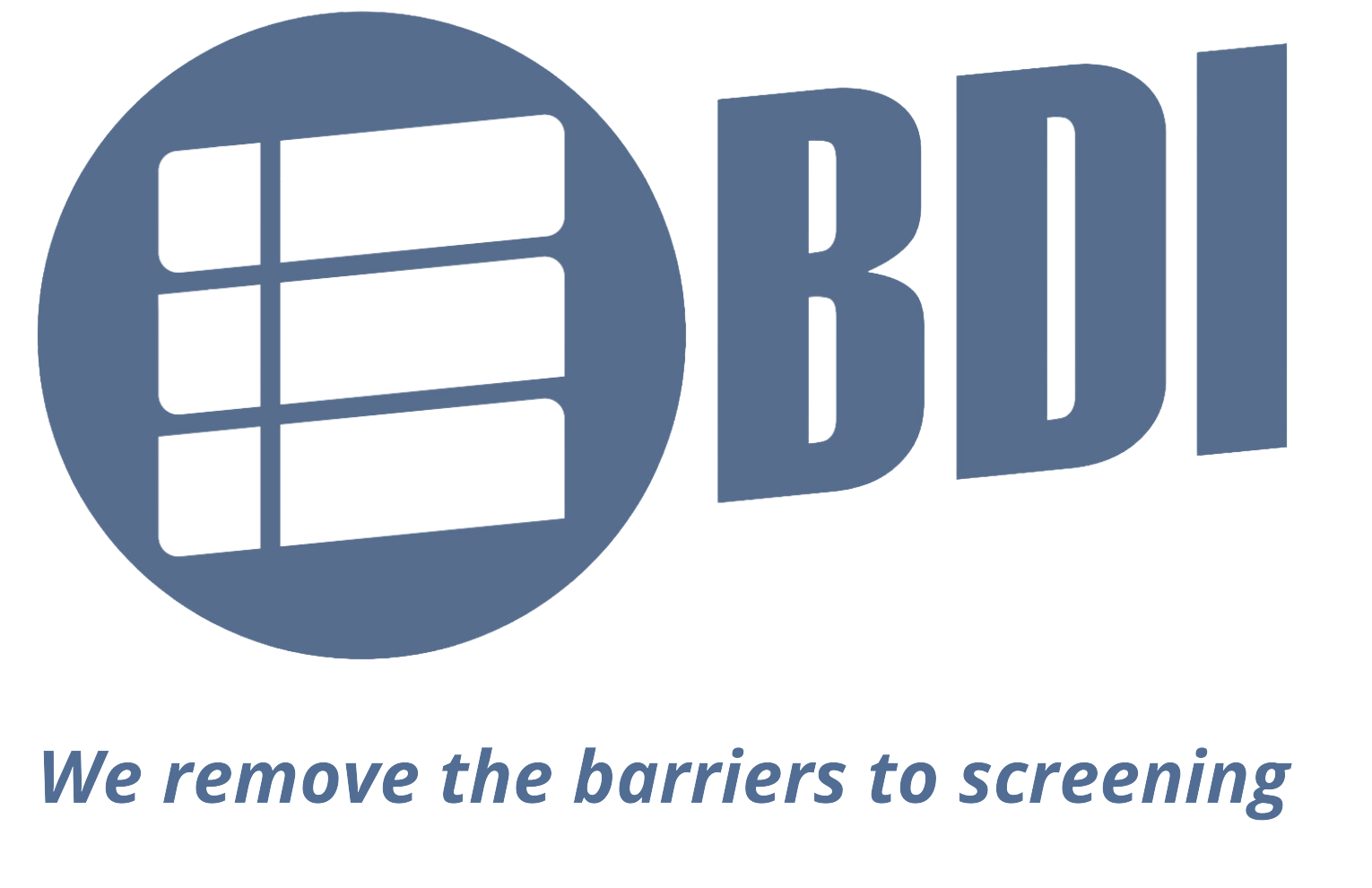PROBLEM WE ADDRESS
Vertebral Fractures




Several Effective, Safe and Inexpensive Ways to Prevent
Treatments that reduce osteoporotic factures with low risk include:
- Calcium, vitamin D intake
- Exercise
- FDA-approved drugs including: bisphosphonates (Fosamax/alendronate), estrogen, parathyroid hormone (Forteo/teriparatide), sta/Raloxifene, Prolia/denosumab

Prevention Requires Early Detection/Treatment of Osteoporosis
“Silent disease”: osteoporosis is usually asymptomatic until a fracture occurs
Preventing osteoporotic fractures is the main goal of osteoporosis screening.
With early diagnosis of osteoporosis by assessing bone mineral density (BMD) and with early treatment, more advanced osteoporosis and fractures can be prevented.
- Bone density measurement tests are accurate for detecting osteoporosis and predicting osteoporotic fractures in men & women.
- Bone strength is determined by the amount of bone mass or BMD and its quality and microarchitecture. The latter two traits are hard to measure, but BMD can be accurately assessed
- Screening for low BMD and subsequent treatment can increase BMD and decrease the risk of fractures and fracture-related morbidity and mortality.
For all these reasons, USPSTF has long recommended and payers cover (e.g., CPT codes) screening for osteoporosis via BMD assessment to prevent osteoporotic fractures.
Poor Osteoporosis Detection (and thus Treatment) Today
75% of those with osteoporosis are undiagnosed and don’t receive proper treatment
Only 8% of people are screened for osteoporosis who should be
Current BMD test standard dual-energy x-ray absorptiometry (‘DXA’ or ‘DEXA’ imaging) problems:
- Low screening compliance: e.g., above. Many reasons cited, including
- Cost
- Equipment: DXA specialized machine required (has little other use beyond bone density, unlike CT)
- Additional radiation
- Time & other burden of new imaging on patients, providers and others
- Education re: screening need and existence of payer coverage
- Possible provider concern that new scan + provider’s analysis are reimbursed (CPT) ‘only’ ~$100
- DXA accuracy/technology limitations. Over 50% of osteoporotic fractures occur in people deemed non-osteoporotic based on DXA-determined BMD
